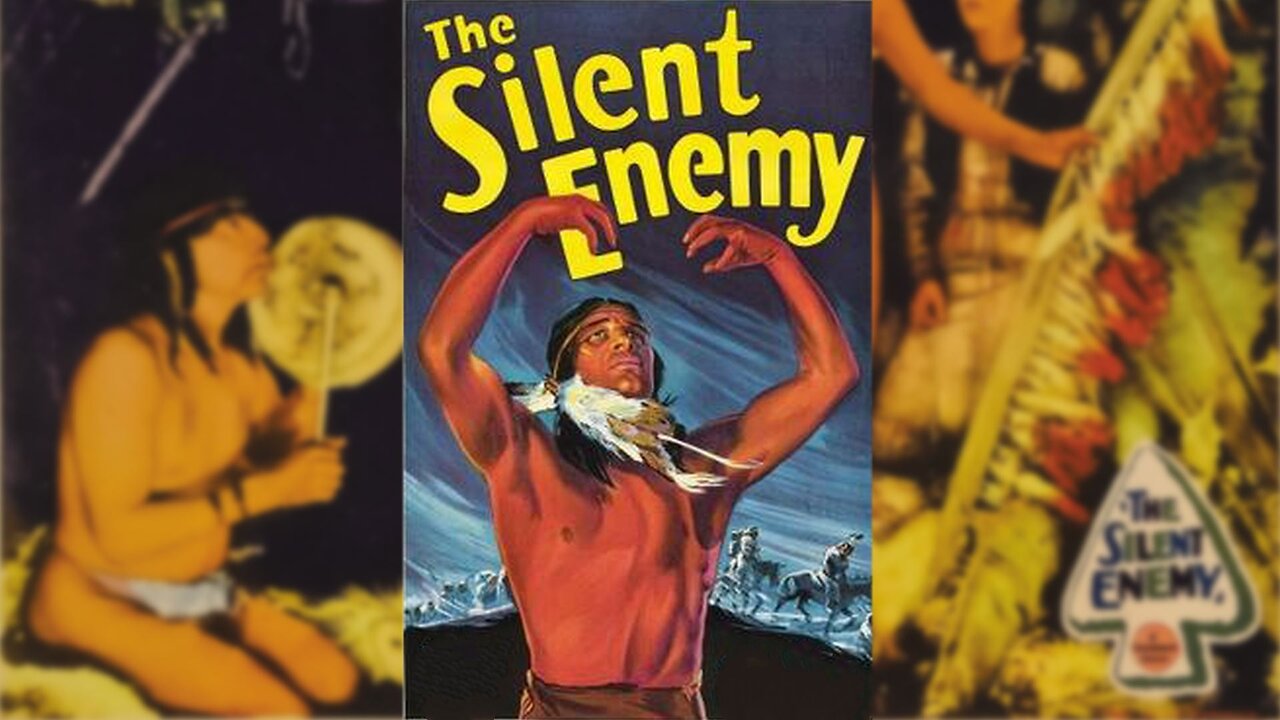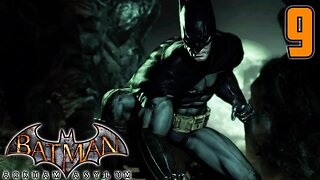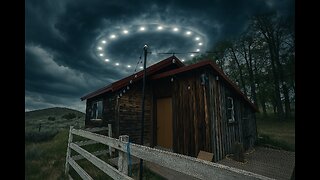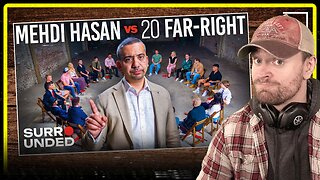Premium Only Content

THE SILENT ENEMY (1930) Chauncey Yellow Robe, Chief Buffalo Child Long Lance | Drama | COLORIZED
The Silent Enemy is a 1930 American silent film directed by H.P. Carver and written by W. Douglas Burden, Richard Carver and Julian Johnson. The drama stars Chauncey Yellow Robe (billed as "Chief Yellow Robe"), Chief Buffalo Child Long Lance, Chief Akawanush and Mary Alice Nelson Archambaud. It premiered on May 19, 1930 at the Criterion Theater in New York City and was later distributed by Paramount Pictures in August of the same year.
The story dramatizes a famine experienced by the post-classical Ojibwe tribe and its leaders (the tribe is anglicized as "Ojibway" in the film). It also depicts a power struggle between skilled hunter Baluk and corrupt medicine man Dagwan.
Before the film begins, Chauncey Yellow Robe greets the audience with a sound speech, in which he explains the tribe's connection to the story and expresses hope for the Ojibwe tribe's history and future.
According to the 26 Dec 1930 Motion Picture Daily, it was filmed in the “timber limits” outside Arnprior, Ontario, while another source cites Lake Temagami as the location.[5] 200 indigenous people were employed in the film's production.
SYNOPSIS
A documentary about the life of Indians in Northern Canada.
CAST & CREW
Chauncey Yellow Robe as Chetoga
Chief Buffalo Child Long Lance as Baluk
Chief Akawanush as Dagwan
Mary Alice Nelson Archambaud as Neewa
Cheeka as Cheeka
Directed by H.P. Carver
Screenplay by W. Douglas Burden, Richard Carver, Julian Johnson
Produced by W. Douglas Burden, William C. Chanler
Cinematography Marcel Le Picard
Edited by Shirley C. Burden
Music by Karl Hajos, W. Franke Harling, Howard Jackson, John Leipold, Gene Lucas, Charles Midgely, Oscar Potoker, Max Terr
Production company Burden-Chanler Productions
Distributed by Paramount Pictures
Release date May 9, 1930
Running time 84 minutes
Country United States
Language English
NOTES
Multiple scenes including special effects occur, including spiritual visions, metaphors, prophecies, and visual interpretations of the afterlife. Most of these moments involve double exposure, overlaying two existing footages, such as the recurring symbol of a wolf growling over a stormy sky.
The movie uses film tinting artistically to connote heat (red often shown during fires, blue during snowstorms), time of day (blue for evening, orange for mornings), emotional cues (brown for joy, blue for antagonists), and possibly as chapter divisions to denote time passing and seasonal change.
Chauncey Yellow Robe's speech at the start contained sound-on-film, and there were multiple moments of synchronized chants throughout the film. The Motion Picture Daily still described the film as "silent with a synchronized score.
Shot circa 1928 in the Temagami region of Ontario, the film depicted the life of the Ojibwe prior to the arrival of European settlers and was unique for its early use of Indigenous actors. Burden relied on to the detailed accounts of French missionaries documented in The Jesuit Relations during the writing of the screenplay.
Animals appear centrally in the film as companions, sources of danger and conflict, and recurring symbols. Animals in the film include partridges in traps; an adult bear, shot with an arrow by Baluk; a beaver joyfully spotted by Cheeka; its two bear cubs, kept as pets by Cheeka, who are in a bucket on a canoe, climb trees, and later play with the tribe's wolves; a wolverine breaking into another tribe's caché to eat its preserved meat; starving Husky dogs attacking each other; multiple elks, killed; a 9-foot mountain lion attacking a bear; and the crossing of the caribou as well as caribou that had been shot with arrows. The animal's corpses are shown; they appear to be real animals hunted and slain, usually with arrows.
The Silent Enemy premiered on May 19, 1930 in New York City at the Criterion Theater, and its premiere was briefly mentioned in the Motion Picture Daily. Having taken more than two years to film and edit, its release coincided with the rise of sound films, which impacted the success of the film despite strong critical praise.
In 2012, composer Siegfried Friedrich wrote a new score for the film, performed by violinist Serkan Gürkan and sound edited by composer Roumen Dimitrov.
-
 10:22
10:22
Lost n Found Westerns
2 months agoBORDER ROMANCE (1929) Podcast | Free Movie
46 -
 15:16
15:16
Fit'n Fire
19 hours agoThe Beretta 92X Performance
862 -
 5:33
5:33
Blackstone Griddles
13 hours agoBetty's Garlic Butter Clams on the Blackstone Griddle
379 -
 11:06
11:06
Nicholas Bowling
1 day agoCollege Atheist Couldn't Accept This Simple Fact | GSU Recap
1691 -
 31:20
31:20
Degenerate Plays
20 hours agoThe Batman Conundrum - Batman: Arkham Asylum : Part 9
63 -
 19:04
19:04
CarlCrusher
16 hours agoThunder Strike Ranch UFO Night Watch
3031 -
 4:21
4:21
Geoff_Tac
1 day agoSmith & Wesson Owners Need to See This!
623 -
 8:11:50
8:11:50
MyronGainesX
1 day ago $60.85 earnedObama Treason, Syrian War, WNBA L, Mehdi vs Rightwingers, Candace v Nick!
152K57 -
 3:14:26
3:14:26
PandaSub2000
1 day agoGame Boy Night 6 | ULTRA BEST AT GAMES (Original Live Version)
27.4K2 -
 3:12:54
3:12:54
MattMorseTV
11 hours ago $23.49 earned🔴Reacting to the DEBATE.🔴20 BASED vs. 1 WOKE.🔴
95.4K47